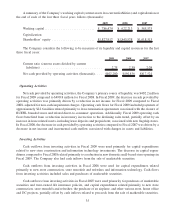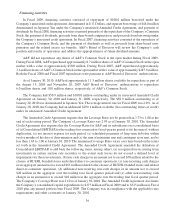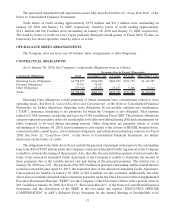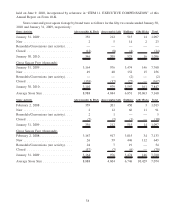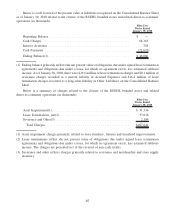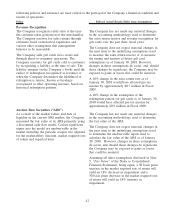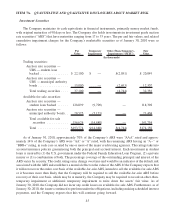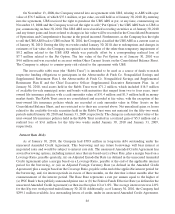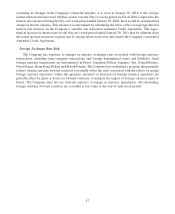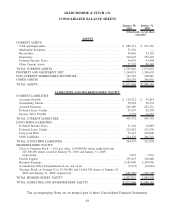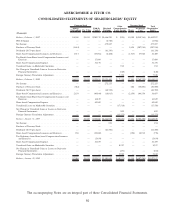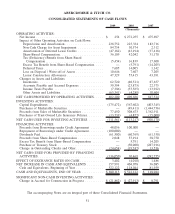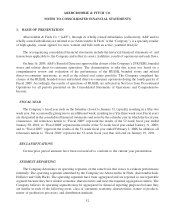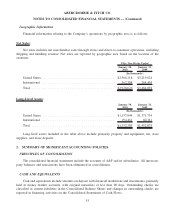Abercrombie & Fitch 2009 Annual Report Download - page 45
Download and view the complete annual report
Please find page 45 of the 2009 Abercrombie & Fitch annual report below. You can navigate through the pages in the report by either clicking on the pages listed below, or by using the keyword search tool below to find specific information within the annual report.
Policy Effect if Actual Results Differ from Assumptions
Equity Compensation Expense
The Company’s equity compensation expense
related to stock options and stock appreciation
rights is estimated using the Black-Scholes option-
pricing model to determine the fair value of the
stock option and stock appreciation right grants,
which requires the Company to estimate the
expected term of the stock option and stock
appreciation right grants and expected future stock
price volatility over the expected term.
The Company does not expect material changes in
the near term to the underlying assumptions used
to calculate equity compensation expense for the
fifty-two weeks ended January 30, 2010. However,
changes in these assumptions do occur, and, should
those changes be significant, they could have a
material impact on the Company’s equity
compensation expense.
A 10% increase in term would yield a 4% increase
in the Black-Scholes valuation for stock options
and stock appreciation rights, while a 10%
increase in volatility would yield a 9% increase in
the Black-Scholes valuation for stock options and
a 10% increase for stock appreciation rights.
Supplemental Executive Retirement Plan
Effective February 2, 2003, the Company
established a Chief Executive Officer
Supplemental Executive Retirement Plan (the
“SERP”) to provide additional retirement income
to its Chairman and Chief Executive Officer
(“CEO”). Subject to service requirements, the CEO
will receive a monthly benefit equal to 50% of his
final average compensation (as defined in the
SERP) for life. The final average compensation
used for the calculation is based on actual
compensation, base salary and cash incentive
compensation for the past three fiscal years.
The Company’s accrual for the SERP requires
management to make assumptions and judgments
related to the CEO’s final average compensation,
life expectancy and discount rate.
The Company does not expect material changes in
the near term to the underlying assumptions used
to determine the accrual for the SERP as of
January 30, 2010. However, changes in these
assumptions do occur, and, should those changes
be significant, the Company may be exposed to
gains or losses that could be material.
A 10% increase in final average compensation as
of January 30, 2010 would increase the SERP
accrual by approximately $1.0 million. A 50 basis
point increase in the discount rate as of January
30, 2010 would decrease the SERP accrual by
approximately $0.3 million.
44



